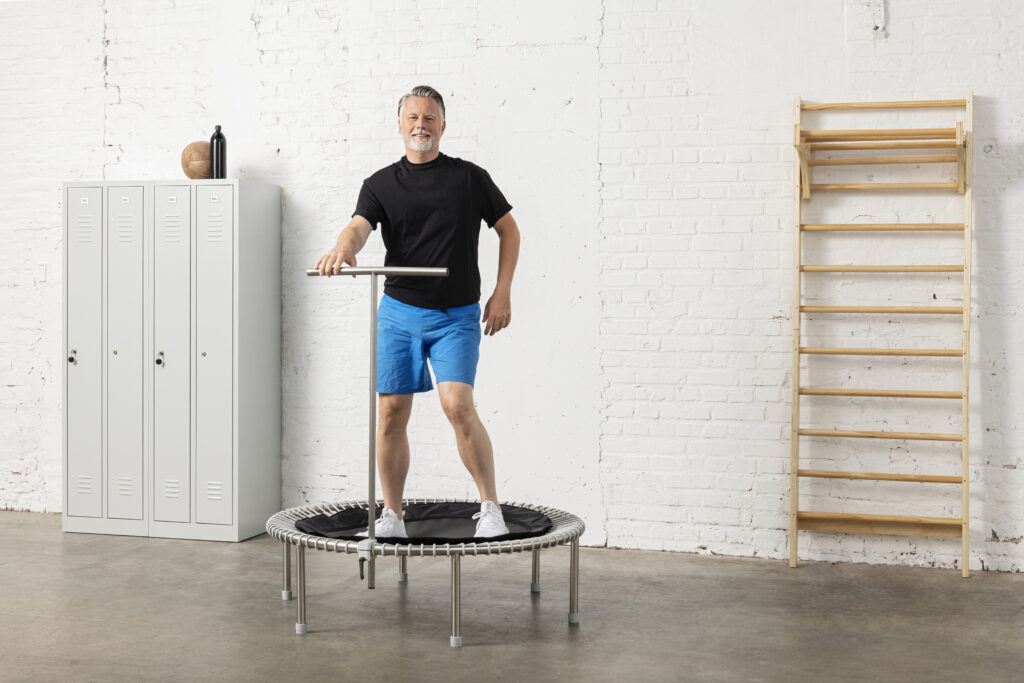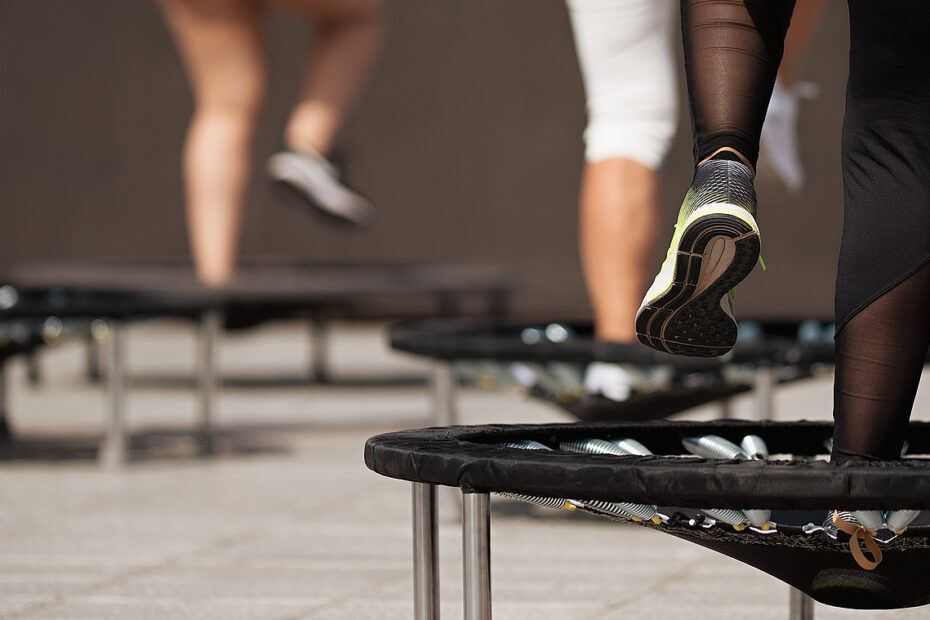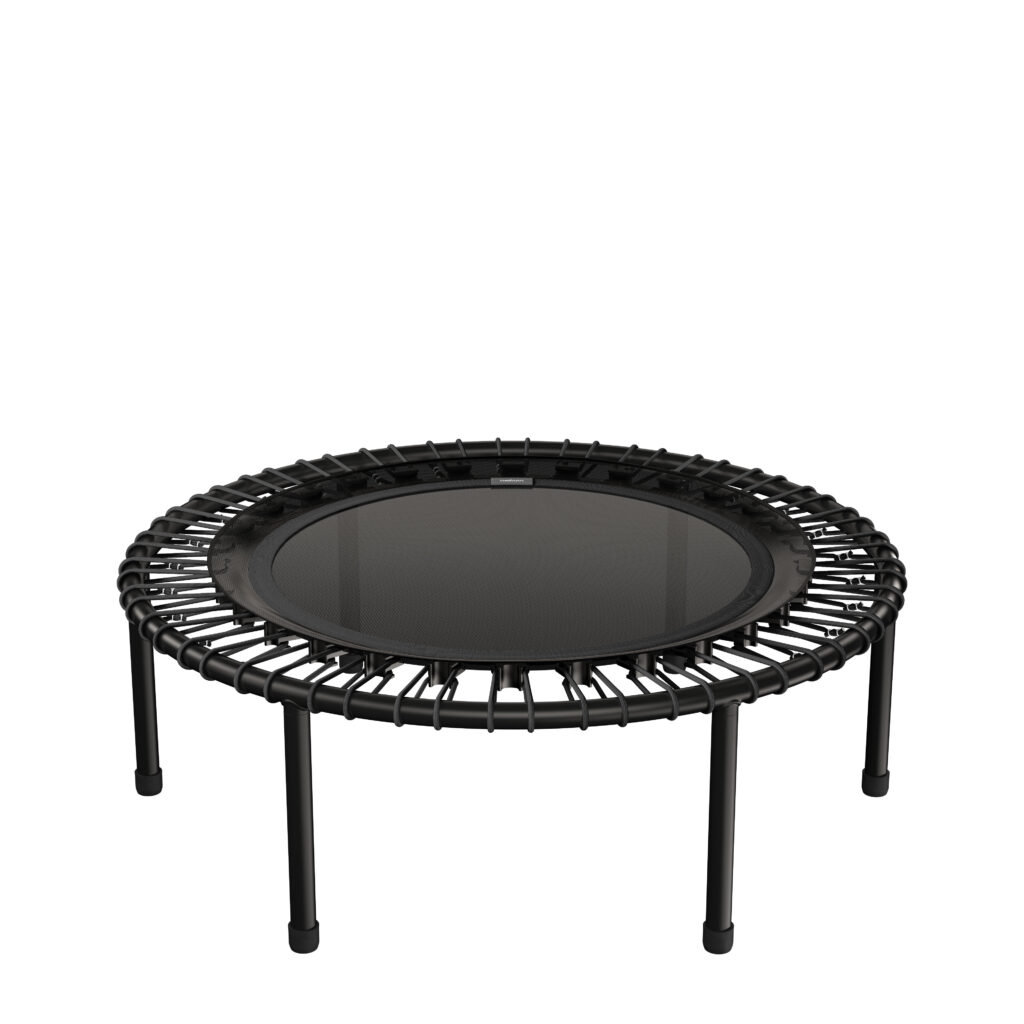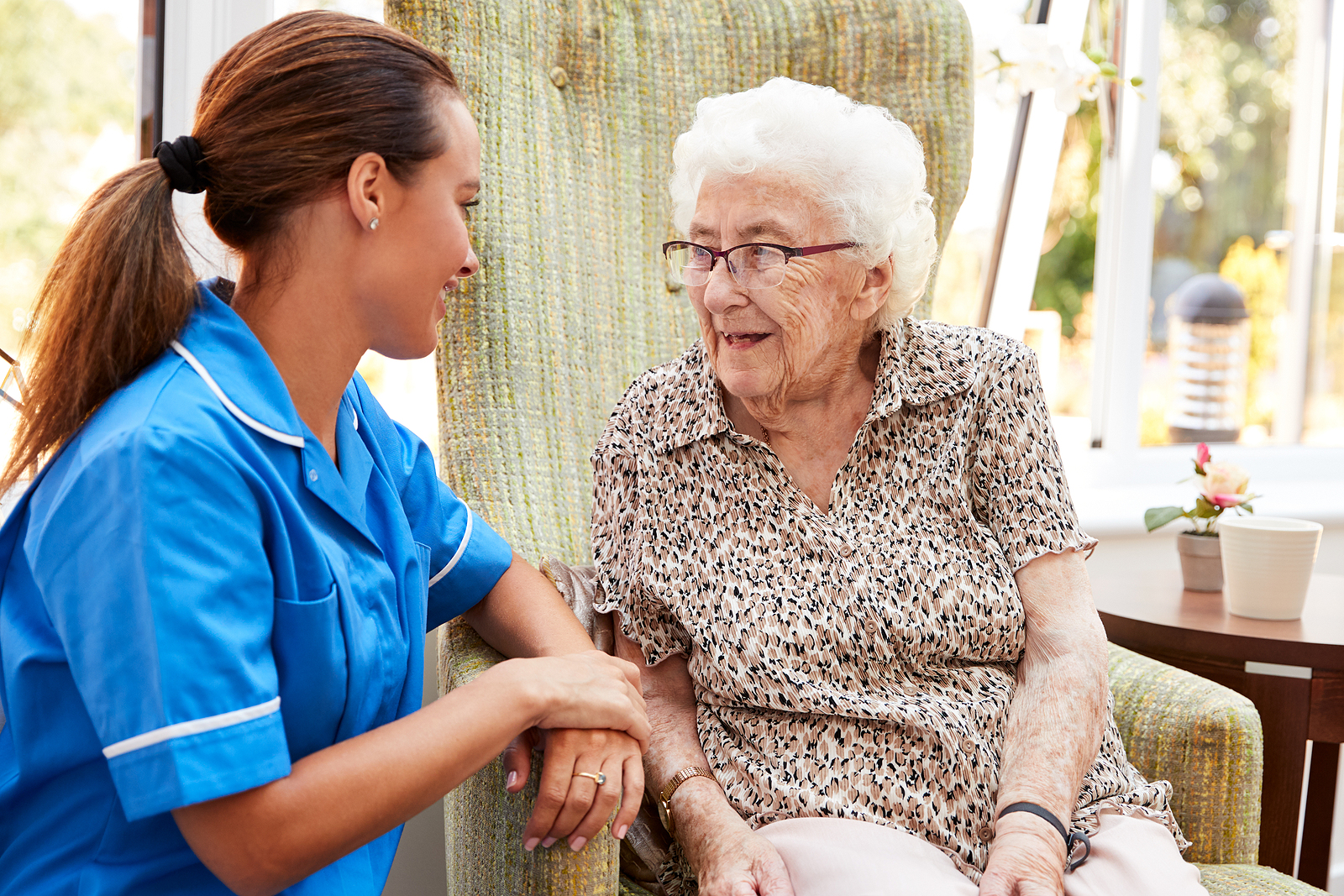When it comes to senior-friendly exercises, there are likely more options to choose from than you realize.
Walking, swimming, and exercise bikes often make great choices, but if you’re looking for something a little different there’s another option worth exploring… rebounding.
Rebounding exercises, done on a mini-trampoline (aka rebounder), can provide a fun and effective workout that’s gentle on the joints.
Plus, it’s an excellent way to improve cardiovascular health, coordination, and strength.
Before you jump on though, it’s a good idea to have a game plan – and that’s where we can help.
In this article, we’ll review the benefits rebounder exercises can offer seniors as well as outline some safe routines to get started.
We’ll also toss in a few additional tips for incorporating rebounding into any fitness routine.
After reading, you’ll be ready to hop on and start enjoying all the benefits rebounders have to offer.
Why Rebounding is Ideal for Seniors
Just to make sure we’re all on the same page: a “rebounder” is the same thing as a mini-trampoline and “rebounding” refers to exercising on said trampoline.
Rebounding offers a unique combination of low-impact movement and gentle resistance, making it an ideal workout for older adults.
Now it does take a certain level of mobility and balance to use safely, but if you can safely access it and tolerate the movements, it can offer a lot of benefits.
Here’s why it’s a great exercise for seniors:
Low-Impact, Joint-Friendly
The rebounder’s surface absorbs much of the impact from movement, making it easier on the knees, hips, and spine compared to activities like walking on hard surfaces.
This is especially helpful for seniors with arthritis or joint pain who need to avoid high-impact exercises.
Improves Balance and Coordination
The subtle bouncing movements on a rebounder engage the core and help strengthen all the big and little muscles that support balance.
The rhythmic up/down motion will also stimulate your vestibular system (inner ear), which is largely responsible for your body being able to maintain its balance.
Both of these factors can help reduce the risk of falls, which is a significant concern for many seniors.
Cardiovascular Benefits
Rebounding can really get the heart pumping, which helps improve cardiovascular health and endurance.
And if you’ve never tried jumping on a trampoline before, you’ll be surprised at how challenging it can be – with so many muscles working together at the same time, it doesn’t take long for your heart rate to elevate.
This makes it a great way for seniors to get a nice cardio workout in without overexerting themselves.
Strengthens Muscles
In addition to helping improve balance, rebounder exercises target the largest muscles in your body as well.
More specifically, we’re talking about your glutes (hip muscles), quads (front of thigh), and hamstrings (back of thigh).
Strengthening these muscles can make everyday tasks like getting out of a chair easier, but it can also help make you feel more stable while walking.
Any way you look at it, being stronger is always a good thing.
Boosts Mood and Energy
Exercise in any form releases endorphins, the body’s natural mood boosters and rebounding is no different.
But rebounding can also be a lot of fun, something we don’t always associate with exercising.
All of the health benefits mentioned above are great, but if nothing else, rebounding can be a fun activity to do when you’re trying to avoid boredom.
Getting Started: Safety Tips for Seniors
Before starting a rebounder exercise routine, it’s essential to take some precautions to ensure safety:
- Consult a Doctor: Seniors should always check with their healthcare provider before beginning a new exercise program, especially if they have underlying health conditions.
- Use a Stability Bar: Many rebounders come with a handrail or stability bar, which can help with balance and provide extra support. This is especially useful for beginners.
- Start Slow: Begin with gentle exercises and short sessions to get used to the movement and gradually build up time and intensity.
- Wear Proper Footwear: Athletic shoes with good support can help prevent slipping and protect the feet during exercise.
- Create a Safe Space: Make sure the area around the rebounder is clear of obstacles to reduce the risk of tripping or falling. And using a spotter can further reduce the risk of injury for seniors with mobility or balance concerns.
5 Rebounder Exercises for Seniors
Once safety measures are in place, it’s time to start rebounding!
Here are five simple and effective exercises seniors can try to improve balance, strength, and cardiovascular health.
1. Health Bounce
This is a great beginner exercise and the foundation for many rebounder workouts. It’s low-impact, easy to perform, and helps improve balance.
- Stand with your feet shoulder-width apart on the rebounder.
- Gently bounce up and down without your feet leaving the surface of the trampoline. Focus on engaging your core and maintaining balance.
- Start with 1 – 2 minutes of gentle bouncing and gradually work your way up to 5 – 10 minutes or more.
2. Marching in Place
This exercise is great for improving coordination and raising your heart rate slightly.
- Stand on the rebounder and slowly lift one knee at a time, mimicking the motion of marching.
- Swing your arms naturally as you march to engage your core and balance. You can use the stability bar for support if needed (and skip the arm movements).
- March at a comfortable pace for 2–3 minutes, rest, and repeat 2 – 3x.
3. Side-to-Side Steps
Side-to-side steps work the legs, hips, and core while enhancing coordination and balance.
- Stand on the rebounder with feet together
- Step to the right, then step back to the center. Repeat the motion on the left side, stepping from side to side.
- Keep the movement slow and controlled, focusing on maintaining balance.
- Continue for 1 – 2 minutes, rest, and repeat.
4. Mini-Squats
Mini-squats are a great exercise because they help strengthen the large leg muscles in the hips and thighs, but they also get your heart working.
And doing them on an unstable surface like a rebounder makes all the smaller, stabilization muscles work harder.
Truly a great exercise.
- Stand on the rebounder with feet slightly wider than shoulder-width.
- Bend your knees and stick your hips back as if sitting down in a chair.
- Stop at about half-way down, pause for a second, and then stand back up.
- Perform 2-3 sets of 10-15 reps.
Doing this exercise without holding on to the safety rail makes it a lot more challenging and really works your balance.
5. Arm Raises with Bouncing
Adding arm movements to your rebounding routine helps build upper-body strength and coordination.
- Start with a basic health bounce, then raise your arms overhead as you bounce gently.
- Lower your arms back to your sides and repeat the movement.
- For added intensity, you can use light hand weights (1–2 lbs) to increase resistance.
- Bounce and raise your arms for 1 – 2 minutes, rest, and repeat.
For added variety, you could always swap out arm raises with arm circles, bicep curls, or any other arm movement you prefer.

Cool-Down and Stretching
After completing your rebounder exercises, it’s important to cool down and stretch to prevent muscle stiffness and promote flexibility.
Here’s a simple cool-down routine:
- Slow Bouncing: Gradually reduce the intensity of your bouncing by slowing down and making smaller movements for 1–2 minutes.
- Gentle Stretches: Step off the rebounder and stretch the legs, arms, and back. Focus on stretching the calves, hamstrings, and quads to release tension in the lower body.
How Often Should Seniors Rebound?
For most seniors, aiming for 15–30 minutes of rebounding 3–5 times a week can offer significant health benefits.
That said, beginners should start with shorter sessions – around 5–10 minutes – and gradually increase the duration and intensity as their strength and endurance improve.
Remember, consistency is key.
Even short rebounding sessions can make a big difference in maintaining strength, mobility, and cardiovascular health over time.
Final Thoughts
I’m going to be honest – writing this article makes me want to start using a rebounder for my therapy patients (I’m sure they wouldn’t mind getting a break from my trusty foam balance pad).
Definitely something for me to think about…
Anyway, if you’re looking for an interesting way to freshen up your workouts, it’s worth considering a rebounder.
Rebounders are low-impact and easy on the joints, making them great for seniors and the list of potential benefits is as impressive as any other fitness equipment out there.
And not that this should be the primary concern, but I guarantee you young grandchildren will appreciate them as well.
When it comes to rebounder exercises, there are tons of other exercises out there that you can do, but the ones listed above are great beginner options for seniors.
And even though rebounding is generally quite safe for seniors, folks with significant mobility or balance issues need to be especially careful.
The last thing anyone wants is a fall or injury.
Using a safety rail for support and having a family member act as a spotter can really reduce fall risk though.
And as always, never attempt any exercise you aren’t comfortable with without speaking to your family physician first.
Otherwise, if you’re a senior looking to add variety to your exercise routine or a caregiver helping a loved one stay active, rebounder exercises are a great option to consider!




